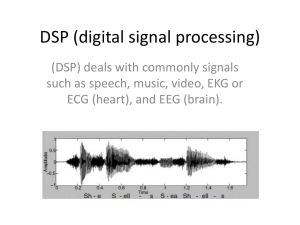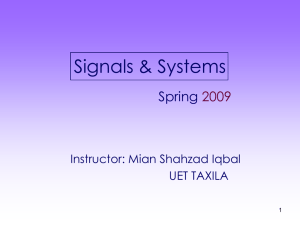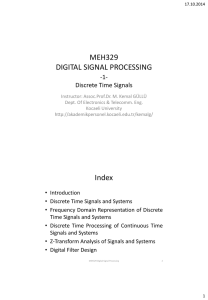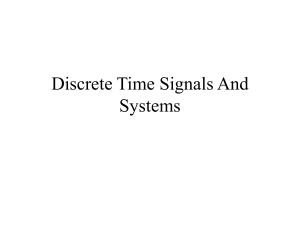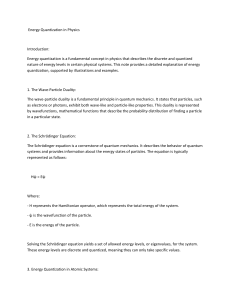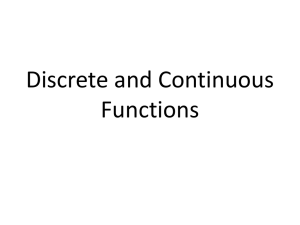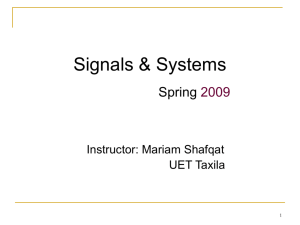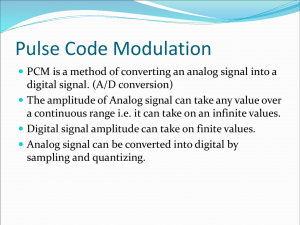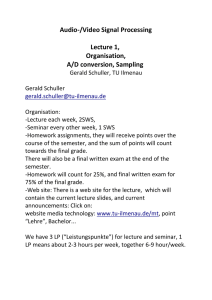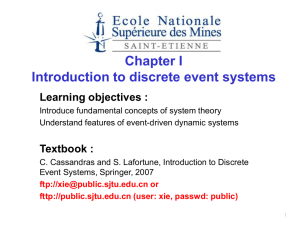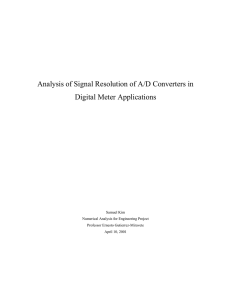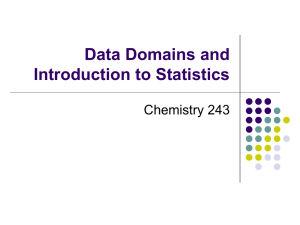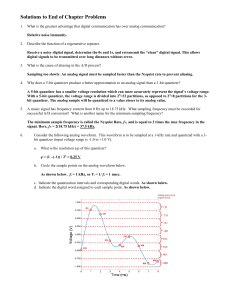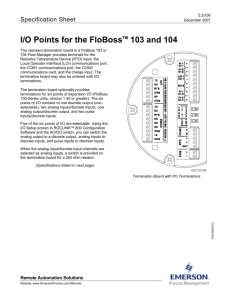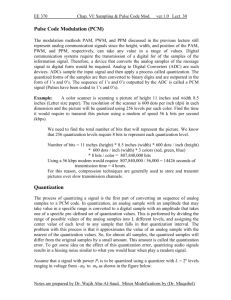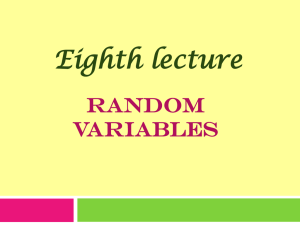Lecture 2
advertisement
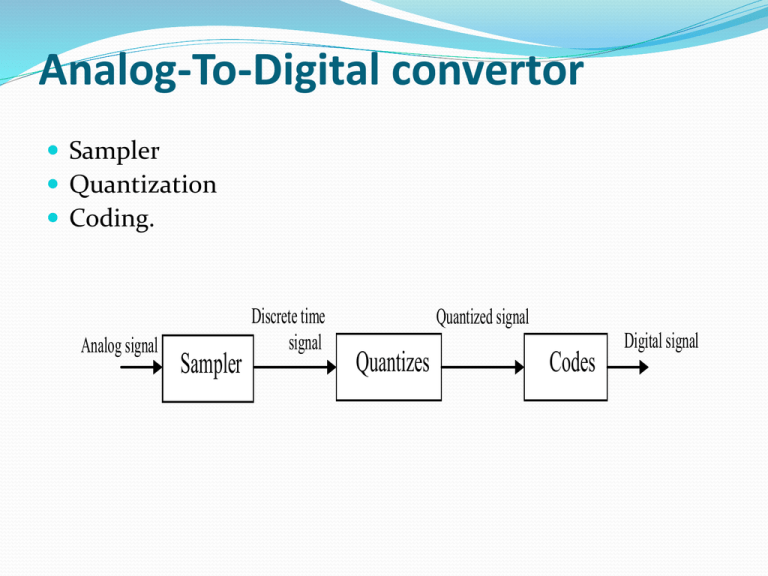
Analog-To-Digital convertor Sampler Quantization Coding. Analog signal Sampler Discrete time signal Quantized signal Quantizes Codes Digital signal Sampling of analog signal This is the conversion of a continuous-time signal into discrete-time signal obtained by taking samples of the continuous-time signal at discrete-time instant Quantization of Continues –Amplitude Signals … Quantizer convert the continouse amplitude into finite sets of discrete value called quantization level There is an error due to this conversation called quantization error eq (n) x q (n) x(n) 2 eq (n) 2 The distance between the two levels is Δ and its computed as x max x min L 1 Example (1-3):- Consider the analog signal x(t) is an input to analog to digital convertor ,what is the output of sampler and quantizer if the sampling rate is 1Hz. Let the number of quantization level =11 Where , take only 9 samples. Coding of Quantized Samples With a word length of b bit we can create different binary numbers Digital-To-Analog converters Discrete time signals representation of the discrete time signal 1. Functional representation, such as 1 x(n) 4 0 for n 1,3 for n 2 otherwise 2. Tabular representation , such as n x (n ) … -2 -1 0 1 2 3 ….. … 0 0 0 1 4 1 …. ….. 3. Sequence representation An infinite-duration signal or sequence with the time origin (n=0) indicated by the symbol ↑ is represented as x ( n ) , 0 , 0 ,1, 4 ,1,8 , 3 , 0 , 0 , Some elementary discrete time signals 1. The unit sample sequence is denoted as δ(n) and is defined as n 0 n 0 1 (n) 0 2. Unit step signal- it is denoted as u(n) and is defined as u (n) 1 0 n 0 n 0 3.Unit ramp signal :-it is denoted as r(n)and is defined as n r (n) 0 n 0 n 0 … (2.9) 4.Exponential function: - an exponential sequence is defined by x(n) a n … (2.10) b. Amplitude modification of discrete time signal Amplitude scaling The sum of two signals The product of two signals H.w : For the signal shown below ,sketch the following signals X(n-2) X(n+3).δ(n-2) X(n-1)+u(-n+1) Classification of discrete time signal Even and Odd signals:A real-valued signal is said to be even if for all n x(n) = x(-n) Whereas a signal is said to be odd if for all n x(n) = -x(-n) X(n)=xe(n)+xo(n) To find the even part of x(n) Whereas to find the odd part of x(n) Example 2.3: - Find the even and odd parts of the following signal: Periodic and Aperiodic Sequences A signal x(n) is said to be periodic if and only if x(n)=x(n+N) for all n. Example 2.4: Determine if the following signal is periodic or not then find its period

